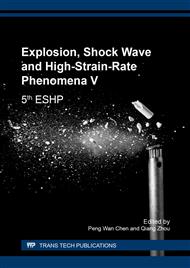[1]
L. Lin, W. Lin, J. Xie, et al. Photocatalytic properties of phosphor-doped titania nanoparticles, Applied Catalysis B: Environmental. 75 (2007) 52-58.
DOI: 10.1016/j.apcatb.2007.03.016
Google Scholar
[2]
A. Kachina, E. Puzenat, S. Ould-Chikh, et al. A New Approach to the Preparation of Nitrogen-Doped Titania Visible Light Photocatalyst, Chemistry of Materials. 24 (2012) 636-642.
DOI: 10.1021/cm203848f
Google Scholar
[3]
M. Pelaez, N.T. Nolan, S.C. Pillai, et al. A review on the visible light active titanium dioxide photocatalysts for environmental applications, Applied Catalysis B: Environmental. 125 (2012) 331-349.
DOI: 10.1016/j.apcatb.2012.05.036
Google Scholar
[4]
J. Ramírez-Salgado. Synthesis of sodium titanate composites by sol-gel method for use in gas potentiometric sensors, Journal of the European Ceramic Society. 24 (2004) 2477-2483.
DOI: 10.1016/j.jeurceramsoc.2003.07.014
Google Scholar
[5]
A.L. Sauvet, S. Baliteau, C. Lopez, et al. Synthesis and characterization of sodium titanates Na2Ti3O7 and Na2Ti6O13, Journal of Solid State Chemistry. 177 (2004) 4508-4515.
DOI: 10.1016/j.jssc.2004.09.008
Google Scholar
[6]
Y. Zhang, H. Hou, X. Yang, et al. Sodium titanate cuboid as advanced anode material for sodium ion batteries, Journal of Power Sources. 305 (2016) 200-208.
DOI: 10.1016/j.jpowsour.2015.11.101
Google Scholar
[7]
L.M. Torres-Martinez, I. Juarez-Ramirez, K. Del Angel-Sanchez, et al. Rietveld refinement of sol-gel Na2Ti6O13 and its photocatalytic performance on the degradation of methylene blue, Journal of Sol-Gel Science and Technology. 47 (2008) 158-164.
DOI: 10.1007/s10971-008-1790-4
Google Scholar
[8]
R.A. Zárate, S. Fuentes, A.L. Cabrera, et al. Structural characterization of single crystals of sodium titanate nanowires prepared by hydrothermal process, Journal of Crystal Growth. 310 (2008) 3630-3637.
DOI: 10.1016/j.jcrysgro.2008.05.020
Google Scholar
[9]
G.D. Hyushin. Hydrothermal crystallization of Na2Ti6O13, Na2Ti3O7, and Na16Ti10O28 in the NaOH-TiO2-H2O system at a temperature of 500°C and a pressure of 0. 1 GPa: The structural mechanism of self-assembly of titanates from suprapolyhedral clusters, Crystallography Reports. 51 (2006).
DOI: 10.1134/s1063774506040304
Google Scholar
[10]
K. Teshima, K. Yubuta, T. Shimodaira, et al. Environmentally friendly growth of highly crystalline photocatalytic Na2Ti6O13 whiskers from a NaCl flux, Crystal Growth & Design. 8 (2008) 465-469.
DOI: 10.1021/cg070341p
Google Scholar
[11]
K. Teshima, K. Yubuta, S. Sugiura, et al. Flux Growth and Characterization of Photocatalytic Na2Ti6O13 Whiskers, Bulletin of the Chemical Society of Japan. 79 (2006) 1725-1728.
DOI: 10.1246/bcsj.79.1725
Google Scholar
[12]
X. Li, Y. Qu, H. Yan, et al. Research Progress on Nanosized Materials Synthesized by Detonation Method, Rare Metal Materials and Engineering. 36 (2007) 2069-(2074).
Google Scholar


